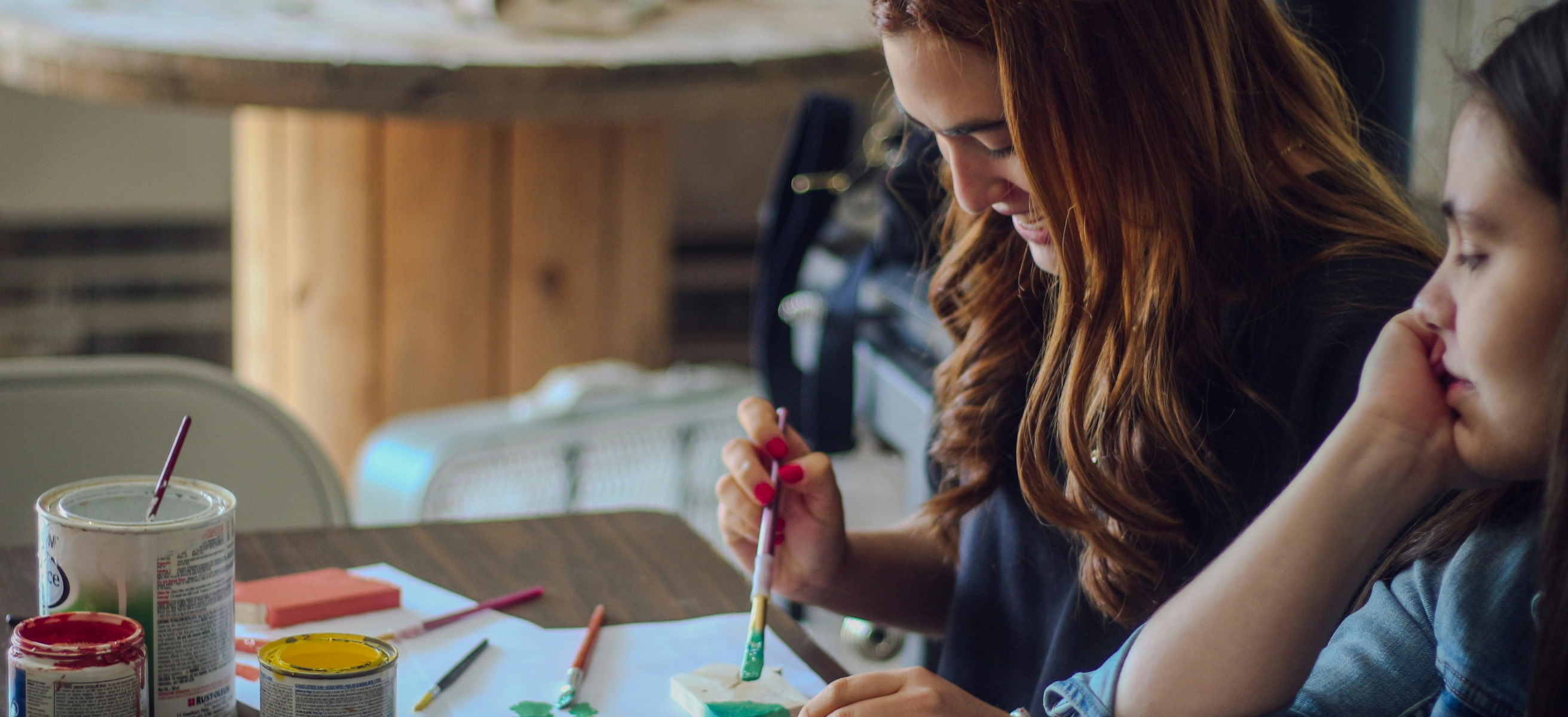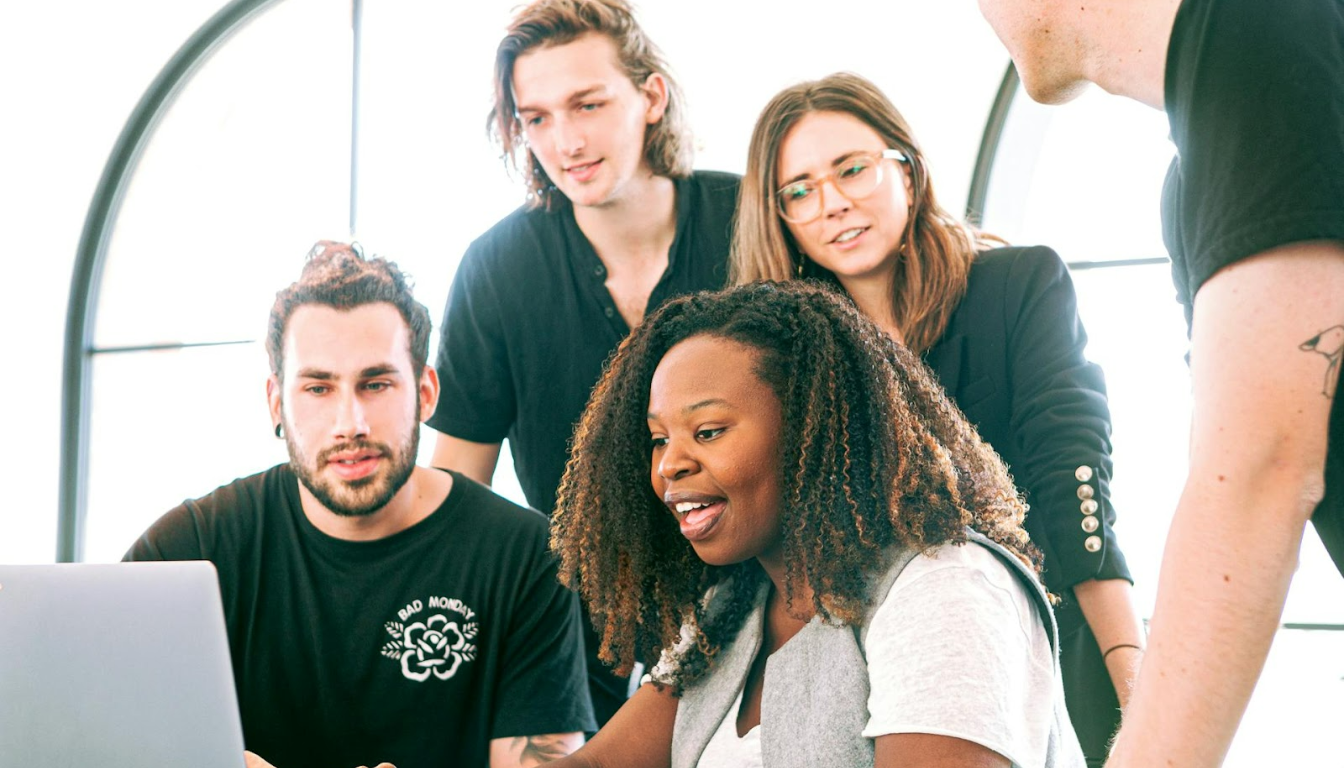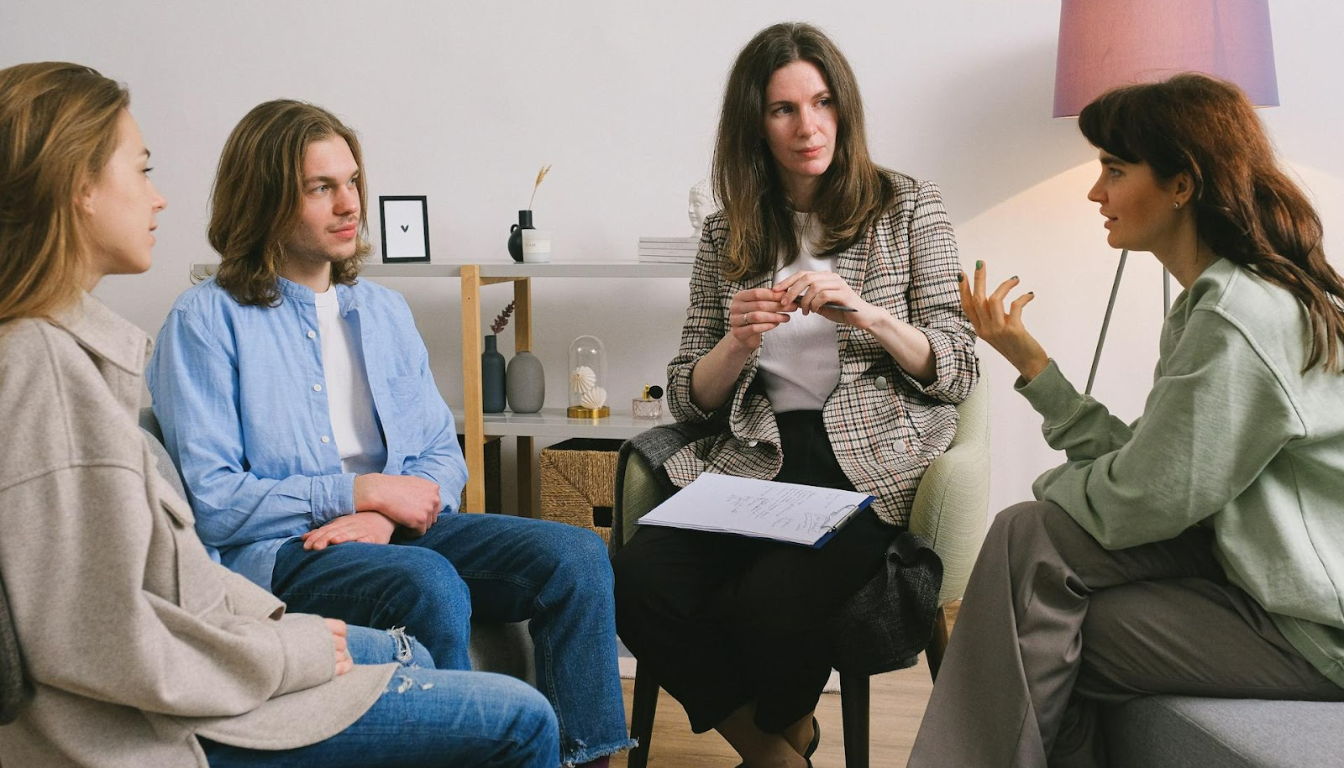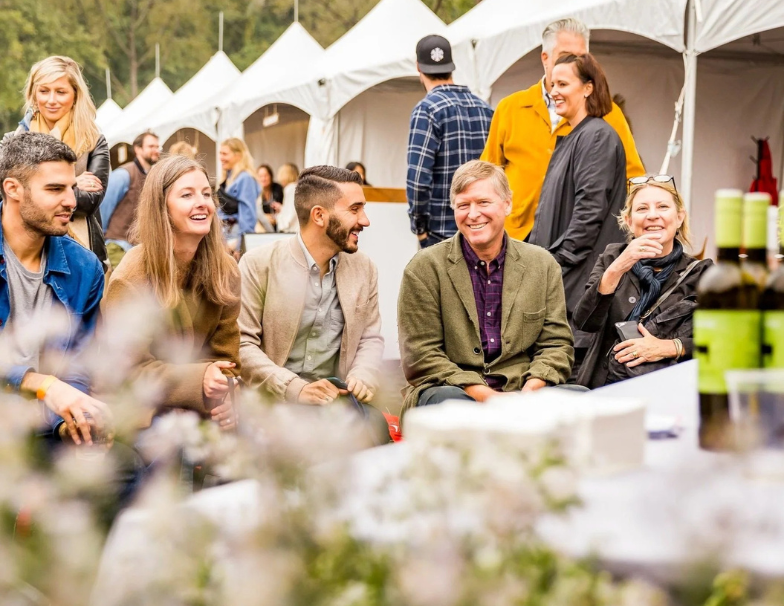Top 30 Creative Workshops Ideas to Inspire Your Team

Searching for workshop ideas to energize your team and encourage creativity? This article covers a variety of activities designed to boost participation, generate fresh ideas, and keep your sessions engaging. Let’s explore effective workshop ideas that can transform your next meeting or training session.
Key Takeaways
- Effective icebreakers and warm-ups create a positive environment and encourage participant engagement within workshops.
- Structured techniques, such as Go-Rounds and Hand-Signals, are essential for boosting participation and ensuring inclusive discussions.
- Evaluating workshops through feedback methods like evaluation forms and participant reflections aids in continuous improvement and enhances future sessions.
Icebreakers and Warm-ups

The right tools and warm-ups can set the tone for a productive workshop by creating a positive environment, building trust, and encouraging participation. They are especially useful for packed agendas or as quick activities to re-energize participants during breaks.
From sharing personal introductions to engaging in fun games like “Two Truths and a Lie” and “People Bingo,” these icebreakers not only help participants feel comfortable but also foster interaction and communication.
Here are a few effective icebreakers to help participants connect and engage from a great starting point.
Personal Introductions
Personal introductions help break the ice and make everyone comfortable. One method is to have participants introduce their partners instead of themselves, creating a relaxed atmosphere. Speed Dating icebreakers, where participants have rapid conversations, also facilitate team building and quick introductions.
Creative approaches like the Trading Card Icebreaker, where participants create personal trade cards, or the Excitement Sharing activity, where they share recent positive experiences, foster personal connections and enhance collaboration throughout the workshop.
Two Truths and a Lie
Two Truths and a Lie is a classic icebreaker that never fails to engage participants. Each person shares three statements about themselves: two truths and one lie. The goal is for the other participants to guess which statement is false.
This game promotes engagement and personal connection, making it a fun start to any workshop.
People Bingo
People Bingo is a dynamic icebreaker that promotes mingling and interaction among participants. The activity involves:
- Participants receiving a 3x3 bingo card filled with statements or questions.
- Finding other members who match the statements on the card.
- Asking up to ten questions during the activity.
- Lasting between 10 to 20 minutes, making it a quick yet effective way to get participants talking.
A variation of People Bingo involves:
- Using a ‘find somebody who’ list instead of open questions.
- Participants completing their cards.
- Participants sharing their findings.
- Discussing the ease or difficulty of filling the squares.
This process fosters thought, reflection, and a sense of accomplishment.
Techniques for Boosting Participation

Facilitators are key to boosting participation in workshops. They can enhance engagement by:
- Using structured agendas
- Providing clear instructions
- Creating safe spaces for sharing
- Encouraging group discussions and brainstorming sessions to promote collaboration and ensure every participant feels valued.
Splitting participants into small groups or alternating between small and whole group discussions can engage quieter members and draw more attention. Addressing withholdings and naming elephants in the room relieves pressure and encourages groups open communication.
Here are some specific techniques to encourage people to boost participation in workshops.
Go-Rounds
Go-Rounds are a simple yet effective method to ensure everyone has a chance to speak. Each participant takes a turn to share their thoughts on a specific topic, promoting a balanced discussion and making sure no one is left out. This process can be described as a go round, ensuring inclusivity for all.
Simple questions and brief contributions help manage time effectively, especially in large groups. This helpful approach allows participants to provide an answer quickly and ensures that answers are answered efficiently.
Hand-Signals
Hand-signals enhance communication and ensure everyone is on the same page. Clearly explain the signals at the start and ensure group agreement.
This technique helps identify agreements and allows participants to contribute without interrupting the flow of discussion.
Talking Sticks
Talking sticks ensure respectful turn-taking during discussions by:
- Allowing only the person holding the stick to speak, preventing interruptions
- Ensuring everyone’s voice is heard
- Promoting active listening and listening skills
- Encouraging open sharing of thoughts
Creative Idea Generation

Generating creative ideas is essential for a successful workshop. Facilitation tools can enhance creativity and help participants share ideas effectively. Encouraging out-of-the-box thinking fosters a collaborative environment where innovative solutions emerge. Offering different activity options, such as ripping paper instead of cutting, can accommodate various participant needs and preferences.
Combining effective facilitation tools with thoughtful accommodations can significantly boost creativity. Here are some specific facilitation techniques for creative idea generation.
Ideastorms
Ideastorms are powerful for generating a variety of ideas. Their key characteristic is the absence of discussion or comment on others’ ideas, encouraging free thinking and preventing participants from getting stuck on the first suggestion.
This activity typically lasts 10-30 minutes and suits groups of 5-15 more people in a group setting.
Roving Ideastorms
Roving Ideastorms involve:
- Small groups brainstorming different topics
- Rotating among the topics
- Allowing participants to explore various topics in a random order
- Adding new ideas to each discussion
Setting a time limit for each topic and ensuring clear writing enhances the activity’s effectiveness.
Post-it Note Race
The Post-it Note Race is a fast-paced event that energizes participants and quickly gathers diverse ideas by creating a long line of post-its.
This activity is fun and highly effective for boosting energy levels and collecting a wide range of thoughts in a short time through exercise.
Prioritizing Ideas Effectively
After generating a plethora of ideas, the next step is to prioritize them effectively. Structured approaches help teams make informed decisions, enhancing productivity. Methods such as voting, discussing pros and cons, and setting time limits manage discussions and keep the team focused. These prioritization techniques ensure participants focus on the most important ideas, making decision-making more efficient.
Here are some specific methods for prioritizing ideas effectively. Start thinking by listing some.
Show of Hands
The show of hands is a simple and effective method for gauging the importance of agenda items. This visual method quickly identifies group preferences and concerns, making it easier to prioritize ideas, especially in larger groups where time is constrained.
Temperature Check
Temperature checks visually assess group opinions and highlight unvoiced differences. By asking participants to indicate their level of agreement or disagreement on an issue, you can quickly gauge overall sentiment and address underlying tensions.
This method ensures all voices are heard and the group stays focused on the most critical issues.
Prioritization Dots
Prioritization dots visually represent preferences, helping to narrow down a long list of options. Participants place dots next to their preferred options, creating a visual picture of group preferences. This method is effective in identifying consensus and ensuring important ideas receive attention.
Evaluating Options

Evaluating options is crucial in decision-making. Key points include:
- Prioritization tools help identify the urgency, importance, or usefulness of ideas, ensuring the team focuses on the most impactful options.
- Ranking options based on urgency and importance aids effective prioritization.
- Discussing less popular ideas before dismissing them can reveal hidden value.
When stuck between two options, explore combining the benefits of both for a comprehensive solution. Here are some specific techniques for evaluating options.
Pros & Cons
The pros and cons method evaluates the significance of different options by listing their advantages and disadvantages, allowing participants to visually see the strengths and downsides of each choice in the same way.
Adding an ‘Other’ or ‘Interesting’ category can provide further insights and aid in making a more informed decision.
Urgent/Important Grid
The Urgent/Important Grid prioritizes tasks based on urgency and importance, helping teams distinguish between what needs immediate attention and what can be scheduled for later, ensuring critical tasks are addressed first.
This grid is particularly useful for managing time and resources effectively.
Six Thinking Hats
The Six Thinking Hats method fosters comprehensive discussion by encouraging varied viewpoints. Each ‘hat’ represents a different type of thinking:
- White for facts
- Red for emotions
- Black for caution
- Yellow for optimism
- Green for creativity.
This method helps participants consider all aspects of an issue, leading to balanced and well-rounded decisions.
Exploring Complex Issues
Exploring complex issues requires tools that reveal hidden challenges and help participants express themselves. Techniques like role-playing, fishbowl discussions, and spectrum lines facilitate deeper understanding and effective problem-solving. A structured format where everyone has a chance to speak ensures all perspectives are considered, making the discussion more inclusive.
Hand-signals can enhance communication and visually identify agreements, although it’s essential to limit the number of signals to avoid confusion. Temperature checks reveal underlying tensions or opinions, helping address them before they escalate.
Here are some detailed methods for exploring complex issues.
Fish Bowl
The fishbowl technique facilitates in-depth conversation by:
- Having some participants discuss while others observe
- Promoting active listening
- Allowing participants to join the discussion by taking an empty seat when they have something to contribute
This setup encourages dynamic and engaging discussion.
Spectrum Lines
Spectrum lines visually represent the range of opinions within a group. Participants position themselves along a line according to their stance on an issue, helping everyone understand varying perspectives. This method is particularly useful for highlighting differences and fostering informed discussions.
Roleplays
Roleplaying involves:
- Exploring reactions and practicing skills through acting out scenarios.
- Helping participants gain insights into different perspectives.
- Responding to specific situations.
Paired roleplay, also known as hassle lines or parallel lines, offers a less intense option.
Participants uncomfortable with roleplay should be allowed to observe.
Facilitators should consider the following when conducting roleplay:
- Be aware that strong feelings can arise during roleplay, requiring time to process.
- Avoid role-playing members of groups participants aren’t part of to respect authenticity and avoid offense.
- Ensure proper preparation and reflection on similar experiences to make roleplay more effective and less intimidating.
Trust-Building Exercises

Building trust within a team is crucial for effective collaboration and problem-solving. Trust-building exercises encourage recognition of strengths, boost team morale, and foster deeper connections. Creating a safe environment reduces anxiety and promotes participation. Facilitators should consider participants’ access requirements and allow them to choose their level of risk.
Activities like the Personal Object Game, Mirroring, and Trust Falls help build trust and improve communication within the team. Here are some specific trust-building exercises.
Personal Object Game
The Personal Object Game allows participants to share an important object that reveals something about themselves. This activity helps participants connect on a deeper level by understanding each other’s motivations and values.
Allowing time and providing an example helps participants feel more comfortable sharing.
Mirroring
Mirroring involves pairs mimicking each other’s movements without talking, promoting heightened awareness of non-verbal communication. This activity helps participants tune into each other carefully and fosters a sense of paired listening connection.
Trust Falls in Pairs
Trust falls in pairs are designed to build trust through physical connections. Participants take turns falling backward while their partner catches them, fostering mutual reliance and enhancing teamwork as they work together.
This collective experience enhances communication and interpersonal relationships within the group through collaborative work and working together, fostering a sense of common ground.
Energizers and Games
Energizers are effective for boosting group energy and enhancing interaction during workshops. Incorporating energizers during longer sessions can help re-energize participants and maintain engagement. From the Knot game to Body Part Twister and Bed-Sheet Ping Pong, these activities not only energize participants but also foster teamwork and cooperation.
Let’s explore some specific energizers and games that can keep your team motivated and engaged.
Shake Down 5-4-3-2-1
The Shake Down 5-4-3-2-1 activity is designed to boost energy or calm tension. Key features include:
- Ideal for groups of 10 to 30 people
- Involves shaking hands and other body parts in a countdown sequence
- Lasts for just 1-2 minutes
- Serves as a great way to start interactions and boost energy levels
Bombs and Shields
Bombs and Shields is a fun and engaging game where participants must move around while keeping their shield between them and their bomb. This activity requires strategic thinking and quick movements, making it an excellent energizer for workshops.
Wizards, Pixies, Giants
Wizards, Pixies, Giants is a team version of ‘Rock, Paper, Scissors’ that engages larger groups in a playful manner. This activity fosters fun and competition while enhancing group dynamics and interaction.
Effective Session Endings
Ending a session effectively is just as important as starting it right. Key aspects include:
- Acknowledging what has been accomplished together to provide a sense of closure and satisfaction.
- Debriefing to help participants discuss successes, failures, and learning outcomes, enhancing retention and application of what they’ve learned.
- Filling evaluation forms at the end of a session to allow for immediate feedback, avoiding the need to chase responses later.
Let’s explore some techniques for effective session endings.
Check-Out
The check-out process allows participants to share their reflections and feelings about the session. This method provides an opportunity for everyone to check in and convey their thoughts, enhancing the overall experience and providing valuable insights for future sessions.
Personal Take-Aways
Personal take-aways encourage participants to reflect on their learning and plan how to apply it. Reflecting on learning helps individuals understand and retain information better. Asking participants to write down their insights using pen and paper can reinforce their learning and provide a tangible reminder of their key takeaways.
Useful questions for reflection can guide participants in determining their next steps, enhancing self-awareness and ensuring that the workshop’s impact extends beyond the session.
Closing Circle
The closing outer circle activity aims to provide closure by allowing participants to express their feelings or share takeaways. This method creates a sense of community and ensures that everyone leaves the session with a positive and reflective mindset.
Evaluating Workshops
Evaluating workshops is crucial for continuous improvement and ensuring that future sessions are even more effective. Feedback on process and content helps identify successes and areas for improvement, making each workshop more impactful. Using mixed methods for evaluation, such as surveys and interviews, can provide a deeper understanding of participant experiences.
Recognizing participant contributions and summarizing key points at the end of a workshop helps highlight the skills gained and reinforces the learning experience. Let’s explore some specific methods for evaluating workshops.
What Are You Taking Away?
Encouraging participants to share one or two key takeaways helps solidify their learning and fosters a sense of closure. This method enhances retention of workshop content and ensures that participants leave with a clear understanding of their key insights.
What Worked Well / Less Well
Gathering feedback on what worked well and what didn’t is essential for refining the workshop process. Specific prompts for feedback can lead to more actionable insights, helping facilitators improve engagement levels, clarity of instructions, and the relevance of activities to the objectives.
Continuously seeking feedback helps enhance participant satisfaction and the overall effectiveness of workshops.
Evaluation Forms
Evaluation forms allow facilitators to gather structured feedback from participants about their experiences. Digital forms can facilitate quicker feedback collection and analysis, although they may lead to less detailed feedback from reflective individuals.
Despite this, evaluation forms remain a valuable tool for assessing the success of workshops and identifying areas for improvement.
Summary
Creative workshops are a powerful way to inspire your team, foster collaboration, and drive innovation. By incorporating effective icebreakers, participation techniques, creative idea generation methods, and evaluation tools, you can transform your sessions into dynamic and engaging experiences. Each technique discussed in this guide provides a unique way to enhance interaction, boost energy levels, and ensure that every voice is heard.
Remember, the key to a successful workshop lies in thoughtful planning, clear instructions, and a willingness to adapt to the needs of your participants. By implementing these ideas, you’ll not only enhance your facilitation skills but also leave your team feeling more connected and inspired. Embrace these techniques and watch your workshops come to life!
FAQs
- What is the purpose of using icebreakers in workshops?
Using icebreakers in workshops fosters a positive environment and builds trust, ultimately encouraging active participation from all attendees. This sets a collaborative tone for the session.
- How can I ensure all participants are heard during discussions?
To ensure all participants are heard during discussions, utilize techniques like Go-Rounds, hand-signals, and talking sticks, which promote uninterrupted dialogue and encourage contributions from everyone. Implementing these methods fosters an inclusive environment where all voices are acknowledged.
- What are some effective methods for prioritizing ideas?
Utilizing methods such as show of hands, temperature checks, and prioritization dots effectively visualizes group preferences, allowing teams to concentrate on the most crucial ideas. This approach ensures that the most valued concepts rise to the top for consideration.
- How can I evaluate the success of my workshops?
Evaluate the success of your workshops by using evaluation forms to collect participant feedback on what worked well and encouraging them to share key takeaways. This approach provides valuable insights for continuous improvement.
You may also like
Unique spaces for your next offsite
Find distinctive venues for your upcoming corporate retreat.
Stay Updated with Our Insights
Get exclusive content and valuable updates directly to you.







